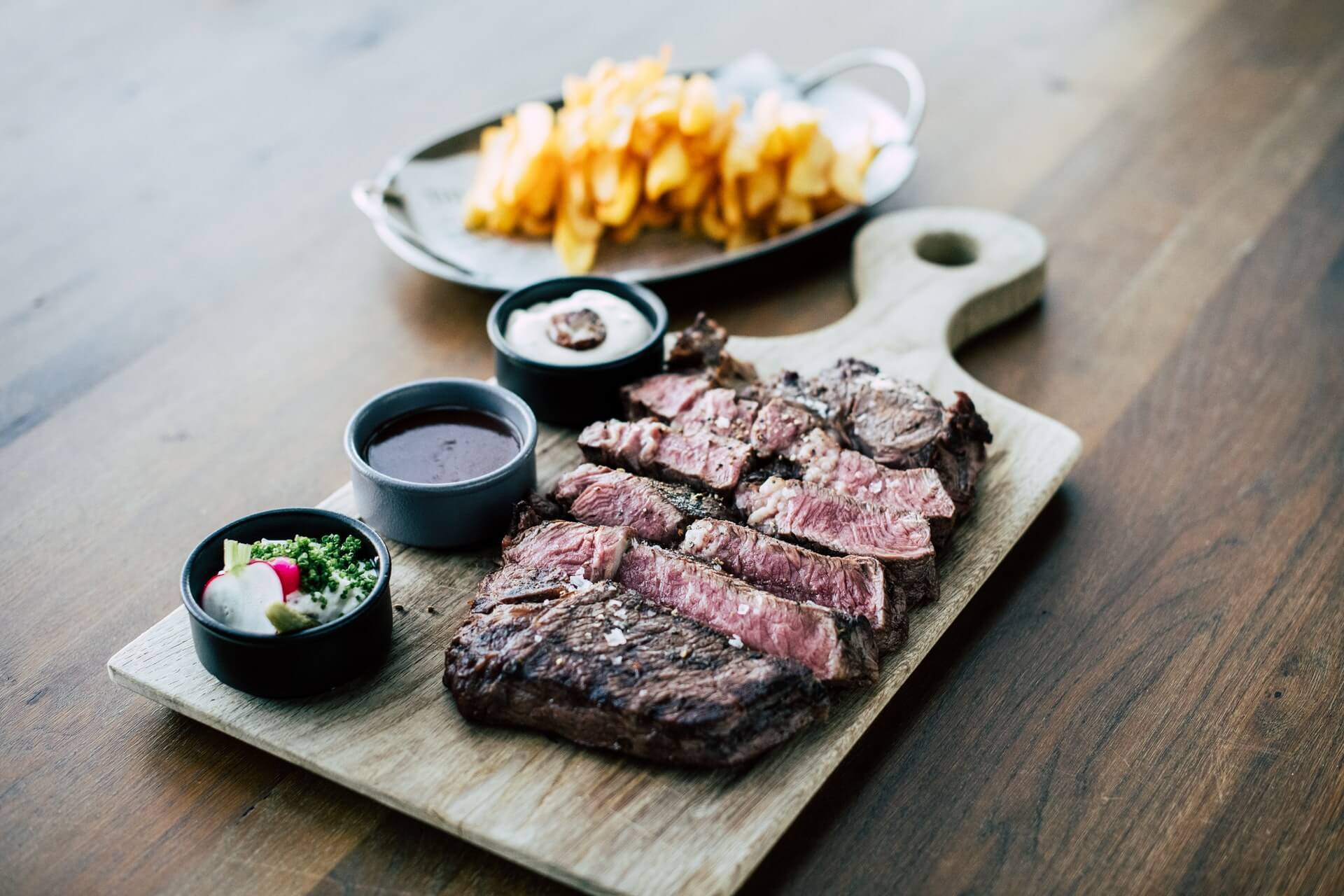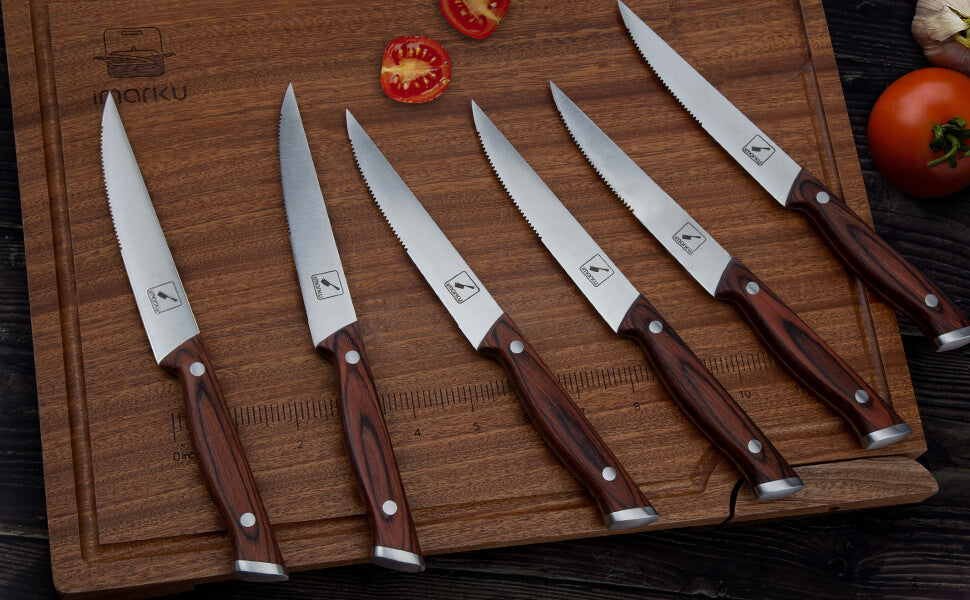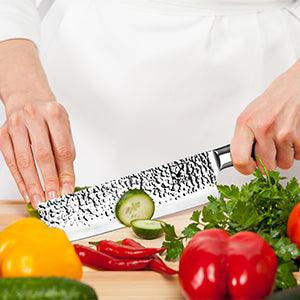TABLE OF CONTENTS
How many times have you dreamed of having a juicy steak for dinner, but instead, you had to cook something from yourself at home? And how many times have you refrained from buying that delicious piece of meat at the supermarket for fear of messing up? If that's you, don't worry. The reality is that you can prepare a delicious marinade for your steak from the comfort of your home. The results will surprise you so much that you most probably won't wait to get to the restaurant to order a steak. And you know what the best part is? It isn't even that complicated. All you have to do is to follow our essential guide to prepare the best-marinated steak recipe ever. Here, we decided to share everything you should know to make the perfect marinade for your steak.
But why marinating? The answer is simple. Marinating your steak not only adds a lot of flavor to your meat but also contributes to making it more tender.

What You'll Need
Before we get started on the recipe, it is always a good idea to list all of the ingredients and tools you'll need so that you'll have it all handy once you start cooking. The good news is that you don't have to plan for hours in advance for our recipe. If you follow our tips, with as little as 20-minutes, you'll get a perfect marinade that has the power to transform even the cheaper cuts into tender and delicious pieces of meat.
The ingredients you have to have are simple. Here's what you should get for the marinade:
- Soy Sauce - to add saltiness and flavor;
- Balsamic Vinegar - which contributes to tenderizing the meat but also to add a rich flavor;
- Olive Oil - to seal the juices in the cut. It is best not to use extra virgin oil for a marinade because of its low smoke point: any regular refined olive oil will do;
- Worchester Sauce - to give further flavor to your steak;
- Honey - to soften the meat and give it a little "glaze," but also to tone down the acidity of the vinegar and the soy sauce;
- Dry or Fresh Minced Garlic - to improve the taste of your meat;
- Dried Herbs - Italian seasoning will do the job if you don't know about spices. Not only will it add some color to the steak, but it will also heighten its natural flavor. Another good option is dried rosemary, whose flavor improves the meat's natural taste and pairs perfectly with the steak.
- Dry Mustard - this will give it a spicy taste without compromising the flavor of the meat.
- Salt and Pepper - as basic as these spices might be, don't forget to add them to your marinade! Use freshly grounded pepper for best results.
While the list might look long, the reality is that you'll probably already have most of the ingredients in your kitchen. All you have to do is combine them and let them infuse into your steak before throwing it on the grill or in the pan.
Start with soy sauce and balsamic vinegar as your base for the marinade. Then, whisk the olive oil, the Worchester sauce, and honey and add them to the compound. Once you notice some consistency, add all of the other ingredients and mix.
We recommend you use a resealable ziplock bag for better results. Add your steak to the bag, pour the marinade on top, and let the meat soak on the dreamy juices for at least 20 minutes. If you are not in a rush, you can leave it overnight in the refrigerator. If you are against using ziplock bags for whatever reason, you can get similar results using a bowl and a lid or some plastic wrap. However, keep in mind that the original marinated steak recipe includes a ziplock.

The Best Beef Steak Marinade in Existence: Our Recipe
Now that you know the ingredients and how to prepare the marinade, it is time you get familiar with how to make a perfectly marinated steak on a skillet. While the marinade plays a central role, cooking your meat the right way can be a game-changer in the final result.
To start with, you must turn the skillet to high heat. Add the steaks as soon as you notice the skillet is warming up, and add some butter or oil for increased crunchiness. Cook each side of your piece of meat for no more than three minutes and lower the heat to medium-high. If you like your meat rare, those 6 minutes will be enough. However, you can decide to cook your steak a couple of minutes more until the desired doneness. For a medium-well steak, you can expect to wait for up to 10 minutes.
You'll find more information on the precise internal temperature for each doneness below.
You can also top your meat with butter or garnish the steak with fresh herbs. Parsley does wonder in adding color and a bit more taste. However, the steak will taste amazing the way it is.

Quick 4 Ingredient Steak Marinade
While the marinade described above is pretty simple, you might be interested in an even easier recipe with only four ingredients. For this marinated steak recipe, all you need to have on hand is a bottle of dark stout (Guinness works wonders because of its strong coffee and cacao notes), some chili powder, honey, and orange or lemon zest.
Chances are you have all of those ingredients in your kitchen already. This recipe is great for the colder season and is excellent for broiling your steak in a cast-iron skillet.
If you wonder why using beer for this recipe, the answer is simple. Not only does this liquid boosts the meat's flavor, but it also helps tenderize your cut of steak. Thus, it allows you to use even less expensive cuts for this marinade. This recipe is our favorite because the contrast between the lemon zest, the honey, and the chili powder provides a delicious taste to the meat.
To prepare the marinade, combine all the ingredients in a bowl and mix. Apply the same method described above to let the steak soak in the marinade. You can either grab a ziplock bag or place meat in the same bow and ensure the steak gets completely covered in the marinade. For best results, let the steak be in the marinade overnight. However, if you are in a rush, 30 minutes will be enough to give you a delicious flavor and attractive tenderness.
What Are the Best Cuts of Steak to Use in a Marinade?
The good thing about the marinade recipes we shared is that they can work for any cut of steak. Of course, some are better than others, and your taste plays a central role in determining the best one for you.
If you feel lost and have no idea what to purchase, stick to leaner cuts. T-bone, tenderloin, ribeye, and top loin are all excellent choices for a marinade.
Flank steak is a good option if you like beef flavor. However, as we said, all cuts are a good option for our recipe. Just remember that thicker cuts (and cheaper ones) will need more time soaking in the marinade for increased tenderness.

Measuring Steak Temperature for a Perfect Cooking Time
Everyone's taste is different when it comes down to preferences of meat's doneness. Not everyone likes their steak to be rare, and some like it well done. Because cooking time will depend on individual taste, we decided to include a concise but complete list of the internal temperature your cut should reach for each doneness. Use a meat thermometer and avoid cutting into your steak to check for readiness unless you want all the delicious juices to run out and dry your steak.
- If you like your steak to be rare, you should stop cooking your meat when it reaches an internal temperature between 120 and 125 degrees F.
- For medium-rare steaks, the temperature should be between 125 and 135 degrees F.
- If you prefer medium doneness, wait until the temperature reaches between 135 and 45 degrees.
- For medium-well, the internal temperature rises to 155 F.
- Finally, well-done cuts' internal temperature reaches more than 155 degrees F.
After you cook your meat to the desired doneness, you must allow your steak to rest for a couple of minutes before cutting into it. Again, this ensures the juices don't escape the meat and prevent your cut from drying out.

Storing Marinated Steak
While marinated steak is best when consumed fresh, because of the time consumption of the recipe, some meat lovers decide to marinate more meat than they will eat in one dinner or lunch. The good news is that it is possible to store your marinated steak in the fridge or the freezer without too much trouble.
If you know you will eat your steak soon, it is best to store it in the fridge. There, it will last for up to five days with no issues, provided that you place it in an air-tight container.
You might not know this, but make sure you avoid storing your meat in a metal container: the acids in the marinade can react with the metals in the container and alter the meat's taste. Additionally, remember not to leave the steak marinating for too long unless you want your steak to taste acidic and lose all of its natural flavors. Indeed, despite what you may be thinking, the marinade does not extend a meat's shelf life. Finally, if you plan to use the marinade as a sauce, remember to boil it before serving it.
For longer storage periods, you can freeze your marinated steak. To avoid altering the meat's taste and texture with frozen bruises, wrap your steak in an aluminum wrap or freezer-safe porous plastic bag. In general, your marinated steak will lose flavor and texture after about nine months.
Defrosting meat is just as important as preparing your marinade and freezing it. As a rule of thumb, you should never let your meat defrost on your countertop or in the microwave, as doing so might expose the steak to harmful bacteria. Instead, opt for a slow defrost process in the fridge. Generally, a steak will defrost in a couple of hours. Be patient if you want to enjoy your delicious piece of meat at its best.

Tenderizing Steak
Tenderizing a steak means softening it to make it easier to eat and digest (but also more delicious). Marinating the meat is one of the easiest and most efficient methods for tenderizing. Adding acidic ingredients such as lemon or soy helps soften the steak by breaking down the tough fibers in the meat. Tenderizing helps lock the flavors and juices that make a piece of meat so good.
Most lean cuts do not need tenderizing because of their natural tenderness. However, tougher cuts like chuck steak can benefit from this technique. For them, before the marination, you can use a meat mallet or a meat pounder to break down the muscle fibers. Pound the steak using the spiky side of the mallet and start from the center before moving towards each side.

Reason for Tough and Chewy Steak
A chewy steak is no pleasure to eat. The reasons for tough and chewy pieces of meat can be plenty. For instance, a low-fat content cut will have higher probabilities to turn out chewy. Fat does not only make a piece of meat more flavorful, but it also creates juices that make it tender and less chewy.
To avoid chewiness, try not to purchase cuts coming from the muscle parts of the animal: they tend to contain more connective tissues. Cuts that come from the legs, shoulders, and back of the animal have a lot of muscle fibers that can cause your steak to be tough and not so easy to chew.
The good news is that if you follow our marinated steak recipe, there won't be any issues with dealing with tough steak due to a wrong cooking process. Plus, our recipe suits any cut. If your piece of meat looks a bit hard, consider pounding it before marinating. Additionally, apply all of the tips we included in this essential guide, and you can rest assured your steak will come out tender as you dream.

Nutritional Value Of Beef Steak Marinade
Despite the bad reputation associated with red meat, steak is a valuable source of protein and vitamins. Even if its high content of cholesterol and saturated fats does not make it the first healthy food you picture, it can be a healthy addition to your diet. In moderation, steak provides you with benefits that help you meet your nutritional needs.
Depending on the cut you decide to marinate, the fat and protein content might vary. In general, you can expect 3 ounces of beefsteak to provide you with less than 200 calories, 20 g of protein, around 7 grams of fats, and 0 grams of carbohydrates.
Take the above numbers as a guideline: the cooking method will influence the nutritional values. Oils, butter, and other condiments might add calories and fats. The same applies to the marinade, even if to a lesser extent.

Tips for Grilling The Perfect Steak
If you want to use the grill, these tips will help you get astonishing results.
To start with, ensure you preheat the grill before putting the meat on. Then, try to move your steak as little as possible once on the grates and allow it to cook evenly on both sides. Even if we already said this, it is worth repeating: do not cut into your steak at any stage to check for readiness. The goal is to have a juicy and tender steak. Also, allow it to rest for a couple of minutes before serving it.
Serving Suggestions
You can serve the marinated steak alone, but siding it with a fresh salad, sweet potato fries, or a simple baked potato can offer you a complete meal. If you grill, you may consider adding some grilled vegetables. For fancier tastes, asparagus match perfectly with the steak too.























Leave a comment
All comments are moderated before being published.
This site is protected by hCaptcha and the hCaptcha Privacy Policy and Terms of Service apply.